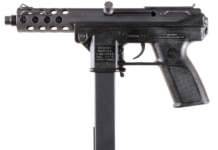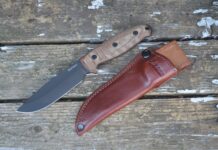There are some great holster companies that are making an effective tuckable holster options out there today.
Unfortunately there are a lot more holster makers that have some lackluster offerings. Many of these are just a regular IWB holster that has some tuckable element bolted on to it, without any consideration for the needs of the wearer.
I mean let’s be honest, most of them probably only have to wear a tucked in shirt for maybe 5-10 days out of the year MAX. That leads to an incomplete understanding of the needs of the end-user.
For years I was on a hunt for a truly discreet tuckable option, only to be met with visible belt loops and a chorus of “nobody notices anyways!”
TOP 5 ELEMENTS OF AN EFFECTIVE TUCKABLE HOLSTER
Once I discovered Discreet Carry Concepts clips, my search was over! Since then I’ve found the perfect balance of attributes that when combined create a solution that’s greater than the sum of its parts. So here’s what you want to look for:
1) A QUALITY HOLSTER BODY
There’s plenty of folks out there making great holster shells. Some offer more turn-key solutions than others, but I’ve personally had great luck with the following:
Keepers Concealment
Dark Star Gear
KSG Armory
Tenicor
PHLster
These also come very highly recommended from friends in the industry I trust and respect:
JM Custom Kydex
Henry Holsters
Holster Company
Bawidamann
(This is not necessarily a comprehensive list, so apologies for anyone unintentionally omitted)
2) A CLAW
Most manufacturers choose a bolt-on solution that allows the user to customize it. Some like Keepers and Tenicor mold the claw into the holster body to maximize the balance between the various attachments. There’s no single best solution, since everyone’s built differently. The amount of grip rotation you’ll require to maximize concealment will very much be individualized.
3) A HOLSTER THAT’S LONG ENOUGH
Jon Hauptman does a great video on The Keel Principle, explaining why a longer muzzle improves concealment. The grip is the heaviest part of the pistol, and it’s also the part that’s the least contained. More real estate BELOW the belt line helps leverage the grip into the body and keep it from tipping out.
4) A WEDGE/MUZZLE PAD
As with the claw, some makers give the end-user the option to add, remove, and customize. Some mold the muzzle pad into the holster body, to create not only leverage but more grip rotation. You’ll have to see which one works best for you.
5) DISCREET CARRY CONCEPTS CLIPS
These are really the secret ingredient This is where the magic happens. Everything else listed above is a great IWB holster, but without a suitably low profile attachment method, The 2.1 and 4.1 clips specifically are designed to attach to the waistband of the pants, and be hidden by the belt. Adding these to an existing holster will likely solve whatever concealment problem you’re having.



